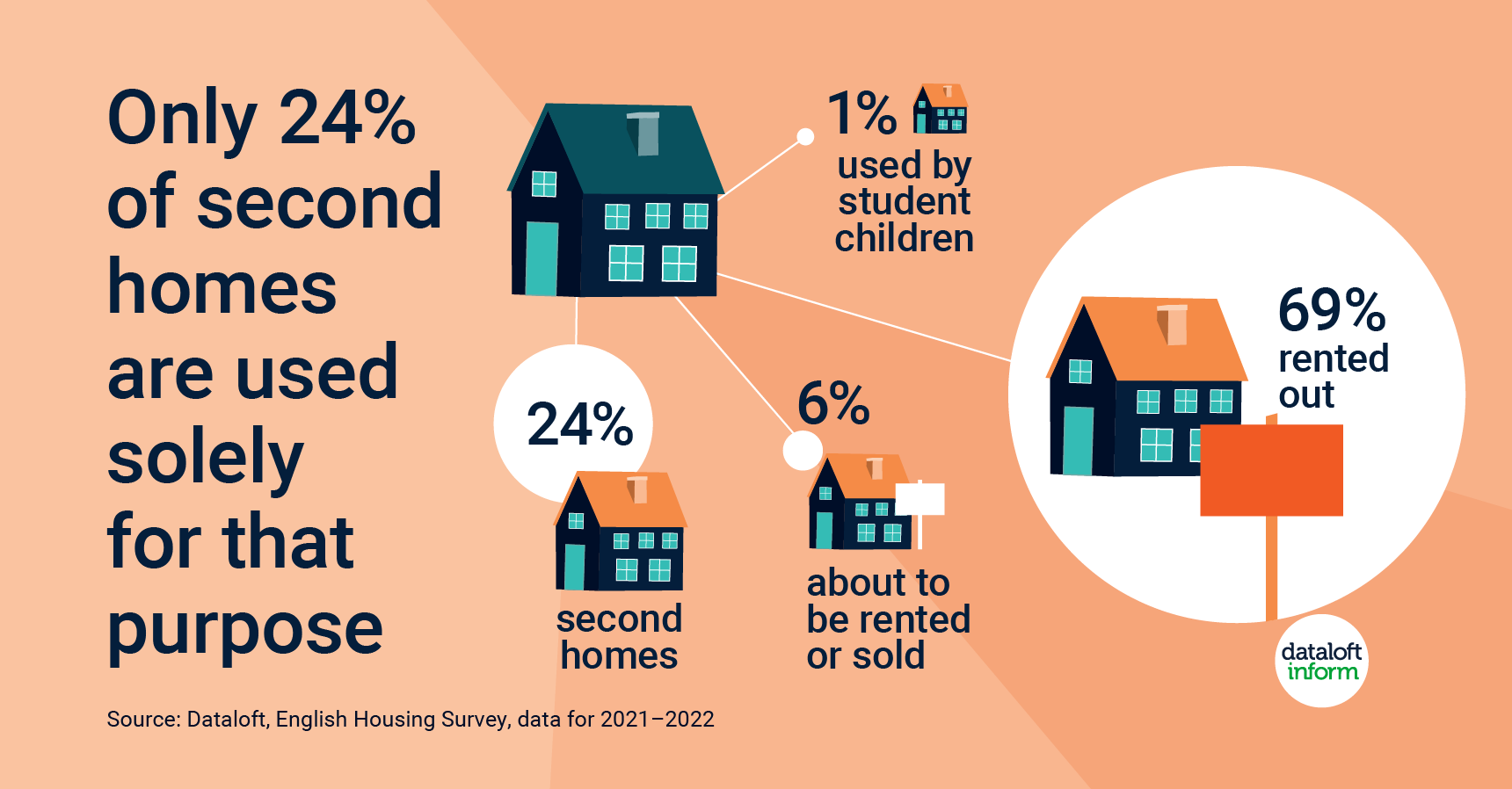
The concept of a "home away from home" has taken on new dimensions in recent years, as evidenced by the latest data from the English Housing Survey. This comprehensive study has revealed intriguing insights into the prevalence and purpose of second homes in the UK. The figures, drawn from the survey conducted between 2021 and 2022, shed light on the evolving trends in property ownership and usage.
According to the survey, the number of second homes in the UK has reached a staggering 3.3 million. This significant figure raises questions about the factors driving this phenomenon and the implications it holds for the housing market, rental landscape, and society at large.
A noteworthy revelation from the data is that a substantial 69% of these second homes are rented out, showcasing a growing inclination toward property investment, despite all the negative press. This trend reflects the desire of many individuals to capitalize on the property market's potential for generating additional income streams. The allure of a consistent rental income has propelled a considerable majority of second homeowners to open their doors to tenants, which is a good thing and effectively blurring the lines between the traditional roles of homeowners and landlords.
Further analysis uncovers that a smaller fraction, accounting for 6% of the total second homes, are on the brink of being rented out or sold. This suggests a dynamic nature of property ownership, with a portion of second homes acting as transitional assets. Homeowners in this category are perhaps navigating between various investment options, weighing the benefits of continued ownership, rental revenue, or a profitable sale.
Interestingly, the data also highlights that a mere 1% of second homes are designated for use by student children. This could reflect the limited number of households that cater to this particular purpose, as students often seek accommodations closer to their educational institutions. The minimal presence of student-centric second homes could also reflect the availability of purpose-built student housing in many university towns.
The remaining 24% of second homes, as per the survey, are reserved exclusively for the use of their owners. This category underscores the traditional notion of a second home – a private sanctuary where individuals and families retreat to recharge, away from the hustle and bustle of daily life. These properties not only offer a physical escape but also serve as potential investments in lifestyle enhancement and future retirement plans.
The implications of these findings are multifaceted. The rise of second homes being rented out transforms the housing landscape, impacting both the availability of long-term rental properties and the dynamics between landlords and tenants. Additionally, the fluidity observed in the allocation of second homes for potential rental or sale suggests a market in constant flux, driven by economic conditions and investment strategies.
As the housing market continues to evolve, policymakers, economists, and homeowners alike must consider the broader consequences of these trends. Questions about housing affordability, rental supply, and the cultural significance of homeownership are all brought into sharper focus by the data from the English Housing Survey. While the concept of a second home is far from new, its shifting roles and purposes underscore the ever-changing nature of property ownership in a modern society.
In conclusion, the latest insights from the English Housing Survey illuminate the diverse roles that second homes play in the lives of UK residents. With a majority being rented out, a portion in flux, and a small fraction dedicated to specific purposes, the second home landscape reflects both economic opportunities and personal aspirations. As the housing market adapts to these changing dynamics, a broader conversation about the meaning of home and its connection to financial goals emerges.









